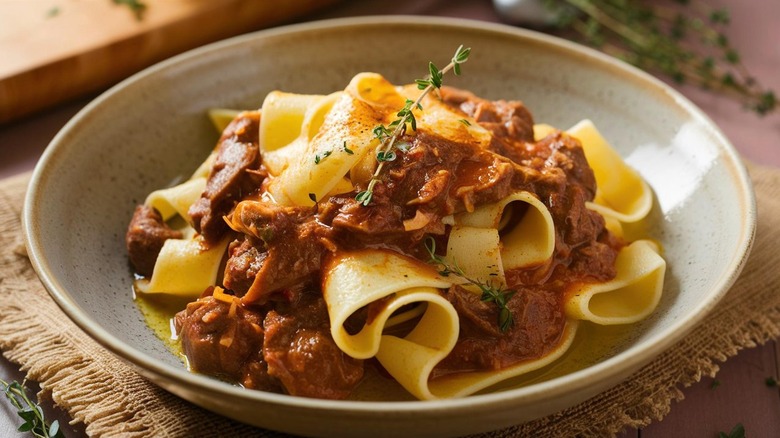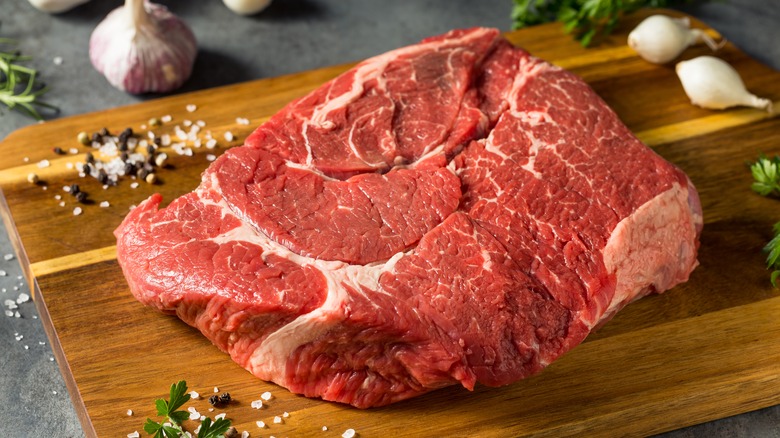What's The Ideal Cut Of Beef To Use In Ragu?
Whether it's the dead of winter and you need something warm, or you're simply craving a rich and delicious dish, ragu is a recipe you can count on. This Italian braised meat sauce is the nonna of all comfort foods, cooked low and slow and piled on top of broad noodles like pappardelle (the best pasta shape for this sauce). As the star of the show, it's key to select the right cut of beef for your sauce — one that creates a tender texture and melds with the other ingredients. Your best bet is going to be chuck roast.
Chuck roast comes from the shoulder area of the cow, and is highly regarded as being rich in fat and connective tissue, making it great for slow cooking. While tough when raw, chuck roast gets very tender when cooked and shreds well, making it the ideal cut for ragu — similar to how it's the best cut of meat for pot roast, as well. Chuck roast also tends to have lots of marbling, the white streaks of fat found in beef that melt during cooking and make the meat taste juicy and moist. Meanwhile, leaner cuts without much marbling would become very dry in a long-cooked ragu.
As your chuck slow-cooks amongst the other ragu ingredients, the meat should loosen up into that perfectly tender consistency. Once it's cooked for a few hours, it's easy to shred the meat into manageable bites to pair with pasta and enjoy, all thanks to the right choice of beef.
How to prep meat for ragu, and other choices for the beef
Choosing the right cut for your ragu is only the first step to achieving recipe success. Before turning it into a sauce, it's best to sear your meat to caramelize the outside. Not only does this enhance that bold and beefy flavor, but it prevents undercooking, as a slow simmer on the stove might not fully cook a very thick steak.
Once the chuck roast is seared, your veggies have been prepped, and your pan is deglazed, don't rush the final simmer. Patience truly is a virtue with this dish, as you'll need to let your meat fully braise within the sauce, which normally takes over two hours and often over three hours. Once the beef is good and tender, and practically shredding apart by itself, you'll know your time and hard work have paid off.
It is possible to use other cuts of beef for your ragu, if you can't get your hands on a chuck roast. The key is to look for cuts that cook well in low-and-slow conditions, and shred apart easily. Try reaching for bottom round or top round beef, which are some of the best inexpensive cuts for a tender braise. They have a similar texture to chuck roast when cooked, which means they'll break down into juicy shredded pieces and are great at absorbing the braising liquid. These are nice affordable alternatives for your ragu, but if you really want to get that super meaty taste you likely know and love, chuck roast is your ideal candidate.


